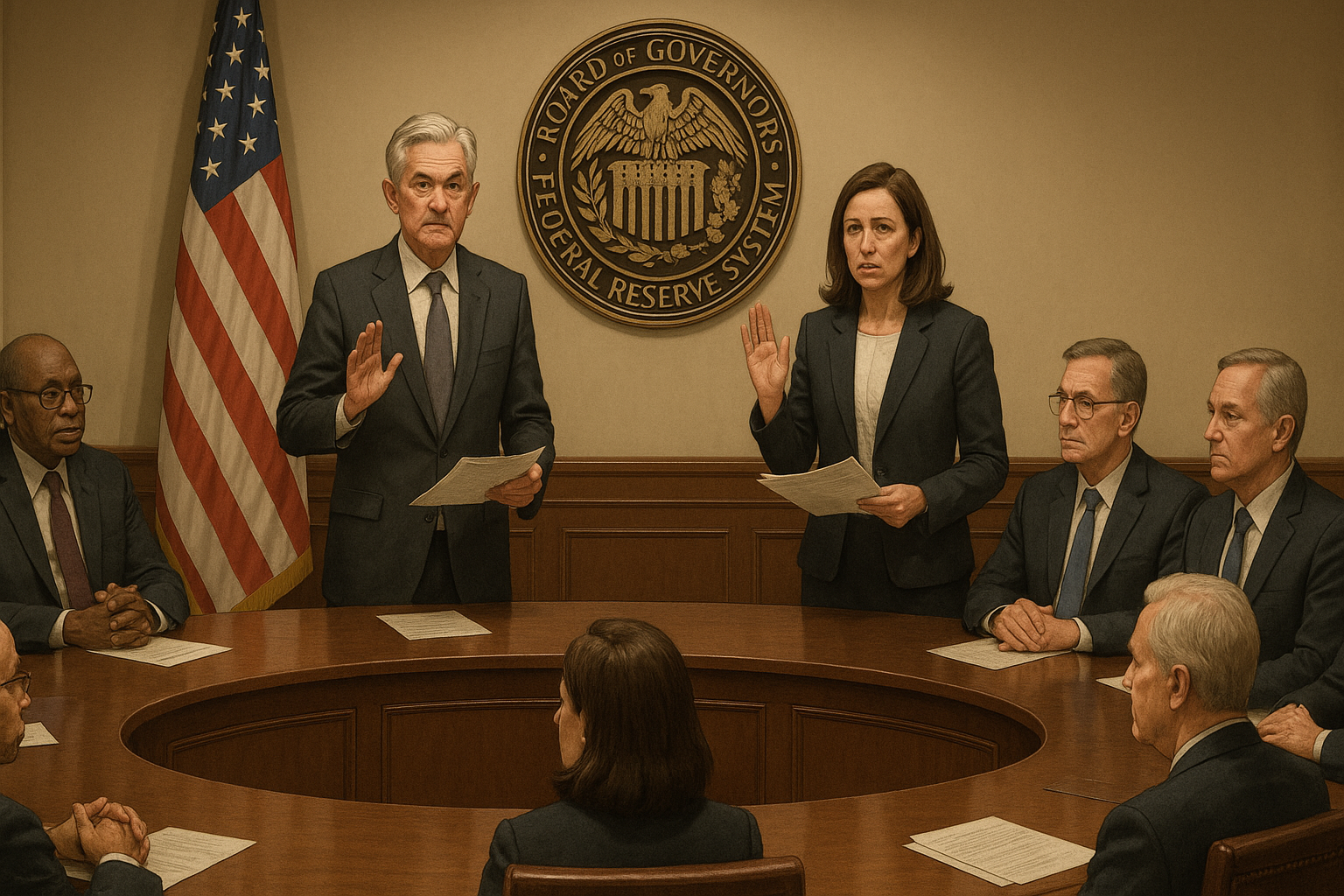Something I've noticed covering central banks for years: they hate public disagreement almost as much as they hate inflation. So when two Fed governors openly rebelled against Chair Powell's decision to hold rates steady last week, my eyebrows shot up faster than Treasury yields after a hot inflation print.
Governors Christopher Waller and Michelle Bowman wanted a quarter-point cut at the latest meeting. The dissenters lost the vote, obviously, but what makes this fascinating is the rarity – it's the first time two governors have broken ranks since 1993. Back then, Whitney Houston dominated the charts, "Jurassic Park" was terrifying moviegoers, and most of today's traders were probably still mastering bicycle training wheels.
I've sat through enough Fed press conferences to know that central banking is a peculiar blend of economic analysis and theater. The institution practically worships consensus. When multiple governors publicly challenge the Chair's position, it's not just academic disagreement – it's a signal flare.
Bowman – who, let's remember, isn't some dove-ish outlier but the Fed's vice chair for bank supervision – didn't mince words: "I see the risk that a delay in taking action could result in a deterioration in the labor market and a further slowing in economic growth." Translation for non-Fed-speak readers: We might be screwing up by waiting too long.
The timing here is absolutely wild. These dissents happened before Friday's jobs report dropped like a neutron bomb on market assumptions. A measly 73,000 nonfarm payroll gain for July would've been bad enough, but the revisions? Brutal. May and June numbers got slashed by a combined 258,000 positions. That's not a minor adjustment – it's like thinking you have a comfortable savings cushion only to discover someone's been quietly siphoning money from your account for months.
(Having tracked labor market data for the better part of a decade, I can tell you these revisions are unusually large and point to potentially serious methodological challenges at the Bureau of Labor Statistics.)
Look, there's something psychologically revealing here. Central bankers typically fear inflation the way medieval villagers feared witchcraft – with an almost irrational intensity that overshadows other concerns. It's institutional DNA. So when two governors essentially say, "Actually, we're more worried about jobs than prices right now," that's a seismic shift in risk assessment.
The Fed, bless their hearts, tends to fight the last war. After their embarrassingly wrong "transitory" inflation call in 2021, they've been laser-focused on price stability, perhaps to the point of tunnel vision. The governors' dissents suggest this recalibration is happening in real-time inside the marble halls of the Eccles Building.
Markets, meanwhile, are doing what they do best – frantically adjusting expectations. CME's FedWatch tool shows the probability of a September rate cut jumping from about 62% to over 80% in just one week. Traders are essentially saying, "Powell just got dealt a hand he can't ignore."
Don't you find it ironic? The Fed constantly reminds us they're "data dependent," yet they held their meeting days before receiving data that might have completely altered their decision. It's like carefully planning a beach vacation without checking the hurricane forecast.
I wonder if Powell is kicking himself. Had the meeting been scheduled just after the jobs report, he might have been leading the charge for a cut rather than resisting it. Timing in monetary policy, as in relationships, can be everything.
The tariff argument raised by Waller and Bowman deserves attention too. They suggested that tariffs have only a temporary impact on inflation – directly challenging those who worry that aggressive trade policies might reignite price pressures. This isn't just academic debate; it's about whether the Fed should treat tariff-driven inflation as noise or signal.
For investors trying to navigate this shifting landscape, September is increasingly looking like a lock for the first cut. The real question now is whether deteriorating conditions might eventually push the Fed toward a more aggressive 50-basis-point move, though that remains a minority view for now.
What we're witnessing is the delicate art of changing direction while pretending it was the plan all along. It's a bit like watching someone who's hopelessly lost finally decide to check Google Maps but insist they knew where they were going the whole time.
Sometimes the most telling moments in finance aren't the dramatic crashes or manic rallies, but these subtle shifts in institutional consensus. The dissenters may soon find themselves in the majority, and Powell might eventually be grateful they gave him cover for what's increasingly looking like an inevitable pivot.
The irony? By the time September rolls around, these rare dissents might look less like rebellion and more like prophecy.




